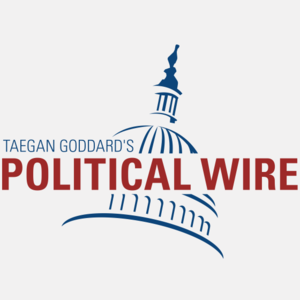- President Donald Trump announced the U.S. will impose 25% tariffs on Canadian and Mexican imports starting next week, citing trade balance and border security concerns. The tariffs will target multiple industries, including autos, energy, steel and aluminum.
- Canada and Mexico have taken steps to improve border security, but Trump’s administration has not signaled intent to delay the tariffs.
- The tariffs could trigger retaliatory measures, disrupt North American supply chains and potentially lead to a renegotiation of the US-Mexico-Canada Agreement.
Full Story
President Donald Trump said the U.S. will move forward with 25% tariffs on Canadian and Mexican imports starting next week after delaying them for a month. The decision, which could have major economic and trade implications, comes as leaders from both countries push for a last-minute resolution.
Trump reaffirmed the tariffs during a joint press conference Monday, Feb. 24, with French President Emmanuel Macron.
“The tariffs are going forward on time, on schedule,” Trump said.
What do the tariffs include?
The proposed tariffs will target multiple industries, including automobiles, energy, steel and aluminum. Trump also proposed tariffs on pharmaceuticals and semiconductors, though they are not explicitly part of this round of March 4 tariffs.
The measures would affect more than $918 billion in U.S. imports, with the automotive sector expected to suffer the most.
This follows Trump’s previous tariff escalations, including a flat 25% tariff on steel and aluminum and the revocation of exemptions for Canada and Mexico. Additional tariffs on downstream steel products will take effect on March 12.
Why is Trump imposing tariffs?
The administration argued that tariffs are necessary to create a more equitable trade balance and to pressure Canada and Mexico to increase border security. Trump has repeatedly claimed that other countries impose unfair import taxes on U.S. goods, harming domestic manufacturing.
However, critics warned the tariffs could worsen inflation and disrupt North American supply chains, particularly for auto manufacturers and energy industries.
How have Canada and Mexico responded?
Both Canada and Mexico have taken steps to strengthen border security in response to U.S. demands, particularly regarding drug smuggling and immigration.
- Mexico has deployed 10,000 National Guard troops to its northern border to curb illegal crossings and fentanyl trafficking.
- Canada appointed a fentanyl czar to combat drug smuggling, reclassified drug cartels as terrorist organizations and expanded surveillance technology along its U.S. border.
Can a last-minute deal be reached?
Despite these measures, the Trump administration has not indicated any further intent to delay the tariffs.
Mexican President Claudia Sheinbaum will meet with White House officials this week to negotiate a resolution.
Meanwhile, Canadian Prime Minister Justin Trudeau has warned of potential retaliatory tariffs on $107 billion worth of U.S. imports, including beer, wine, bourbon and Florida orange juice.
Could this lead to a broader trade war?
The tariffs could trigger a renegotiation of the U.S.-Mexico-Canada Agreement (USMCA), which was signed in 2020 and due for review by 2026. Trump has expressed dissatisfaction with the deal, particularly regarding automobile imports from Mexico and Canada.
Macron said Monday he hopes the tariffs do not escalate into a full-scale trade war, urging the U.S. and Europe to focus on economic cooperation rather than protectionist policies.
The deadline for Canada and Mexico to secure a deal before tariffs take effect remains March 4.







































































































